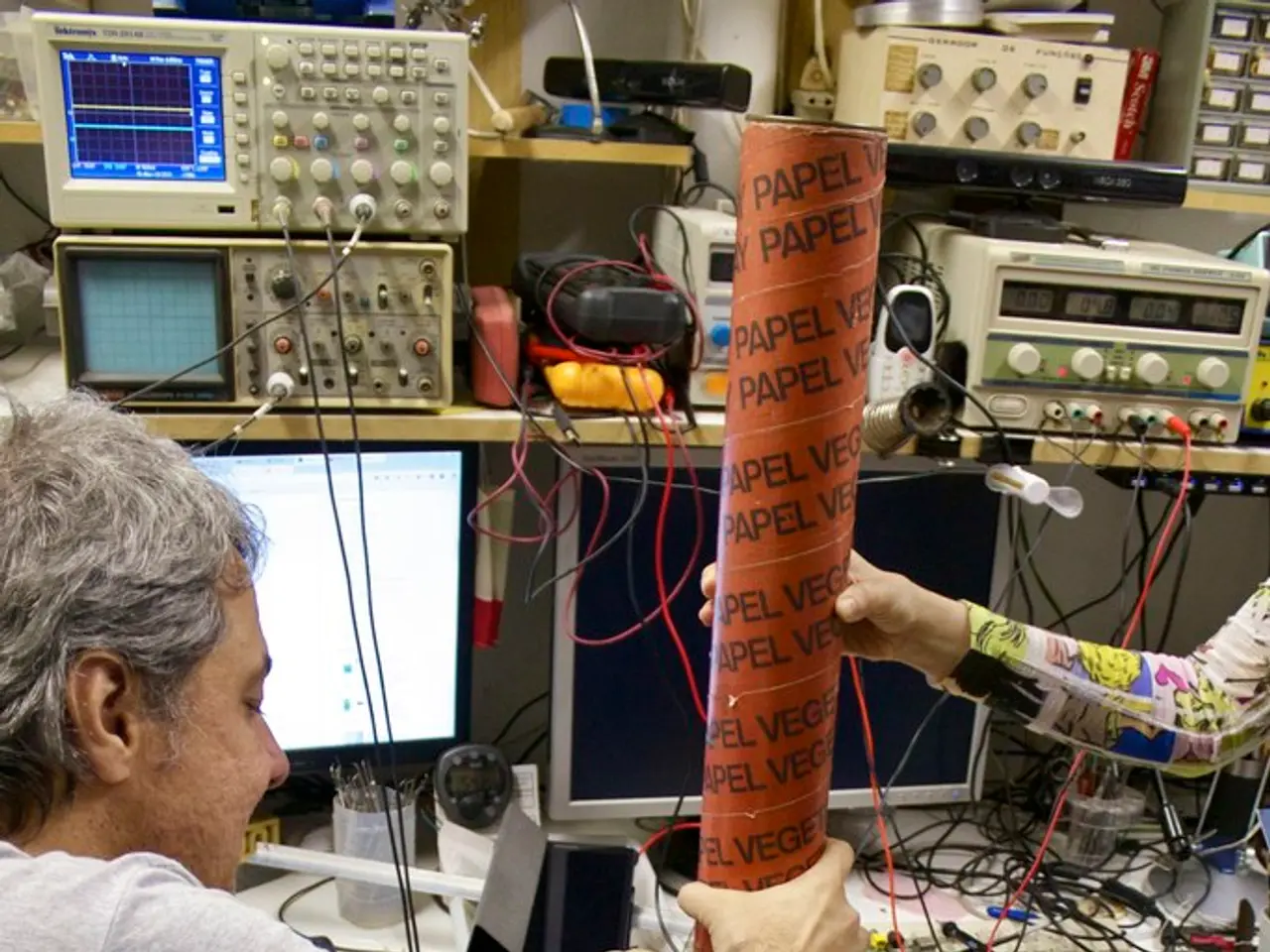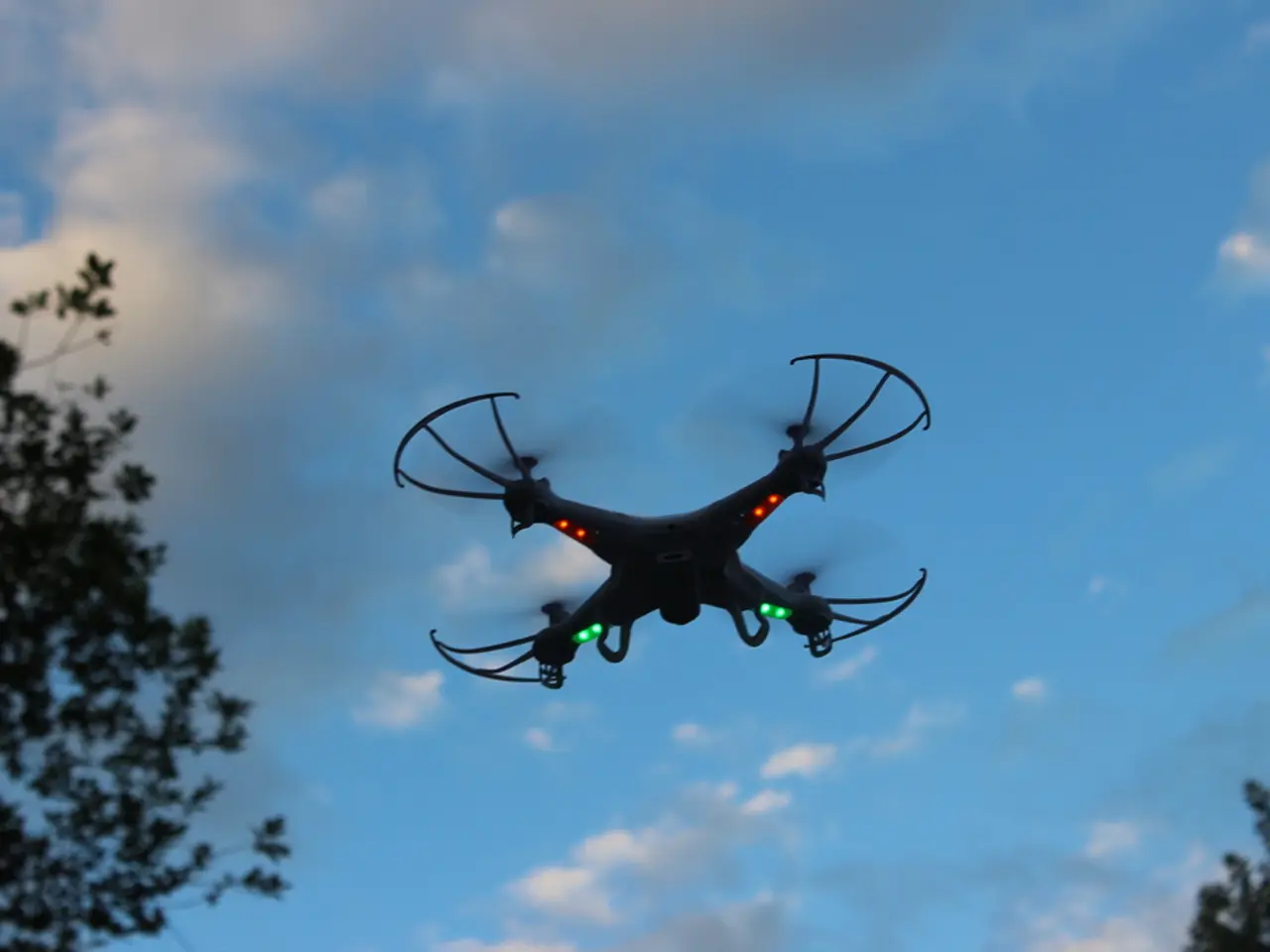Exploring the impact of tactile feedback in human-AI interaction: A study on the role of physical sensations inbetween human and digital entities
===============================================================================================
In a groundbreaking study, researchers have delved into the effects of haptic feedback on virtual character interaction, revealing significant differences in various psychological and experiential dimensions.
The findings suggest that haptic feedback can enhance the realism of virtual character interaction and the user's sense of embodiment. Even low-intensity haptic feedback has been shown to have a substantial impact on physiological arousal, making virtual environments more immersive and believable.
The study, which compared five unique conditions—no haptic feedback, full intensity, half intensity, incorrect position, and delayed timing—revealed that the quality, type, and context of haptic feedback play a crucial role in shaping the user's experience.
Presence and Embodiment
Increasing the realism and responsiveness of haptic feedback, such as through wearable gloves and sleeves that simulate pressure and motion, significantly enhances users' sense of presence and embodiment in virtual environments. Users feel more like they truly "exist" within the virtual space and that virtual bodies are part of themselves when tactile cues correspond well with gestures and object interactions.
Positive and Negative Affect
Realistic haptic feedback that conveys emotional gestures (e.g., pats, handshakes) can improve positive affect by fostering emotional engagement and social bonding, reducing feelings related to "touch starvation" like anxiety and depression. Conversely, lack or poor quality of haptics may lead to diminished emotional connection and possibly negative affect.
Interaction Realism with Virtual Characters
Haptic feedback that dynamically responds to social gestures and task interactions (e.g., force feedback simulating resistance in surgical simulations) increases the perceived realism of virtual character interactions. Such feedback helps create richer social cues and expectations similar to real-life touch communication.
Haptic Feedback Realism
Factors affecting realism include the type of feedback (vibration, force, tactile), the spatial and temporal resolution of the feedback, and whether it is synchronized with visual and auditory stimuli. Force feedback that mimics physical resistance provides nuanced sensations essential for fine motor control and realistic procedural practice, while vibration feedback alone offers more basic sensation relevant for simple alerts or social cues.
Physiological Arousal
Enhanced haptic feedback can increase physiological arousal by creating more immersive and believable experiences, eliciting real emotional and bodily responses during interactions with virtual characters. This has been observed in systems where touch conveys emotional intent, supporting the role of affective touch in modulating stress and empathy responses.
The study's results also suggest that incorrect positioning and delayed timing of haptic feedback may negatively affect the user's experience. Physiological data were collected using galvanic skin response (GSR) to investigate the influence of haptic feedback on physiological arousal, and significant differences were found in GSR amplitude after the first interaction with the virtual character.
The study's findings support applications in training, social VR, telepresence, and mental health, where realistic touch enhances presence, embodiment, positive affect, interaction realism, and physiological engagement. A questionnaire developed for the study aimed to assess the aforementioned factors, and the results suggest potential implications for further research on the impact of haptic feedback in virtual environments.
[1] Adalsteinsson, E., & Loomis, R. E. (2017). Wearable vibrotactile systems for social bonding in virtual reality. ACM Transactions on Applied Perception, 14(3), 1-22.
[2] Dautenhahn, K., & Bidarra, R. (2013). Vision-language-haptics for humanoid robotics. IEEE Transactions on Robotics, 29(3), 459-471.
[3] Kuchenbecker, K. J., & Hahn, S. (2011). Force feedback for surgical teleoperation: A systematic review. Annals of Surgery, 253(5), 664-673.
[4] Kuchenbecker, K. J., & Hahn, S. (2011). Haptic feedback in virtual reality: A systematic review. IEEE Transactions on Haptics, 4(4), 486-502.
[5] McMahan, W., & Kjellin, A. (2011). Motion capture for virtual characters: A survey. ACM Transactions on Graphics, 30(3), 1-24.
Science and technology are crucial in the realm of haptic feedback research. The study's findings demonstrate how sophisticated haptic technology can create more realistic virtual environments, thereby enhancing the user's sense of presence and embodiment, and even influencing the user's physiological arousal (science). Additionally, advancements in haptic technology can foster positive affect by simulating emotional gestures and social interactions, aligning with the principles of science and technology aimed at improving human-machine interactions (technology).



